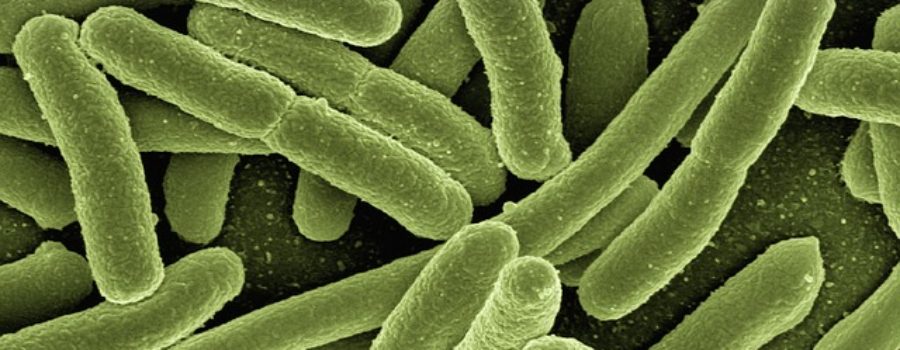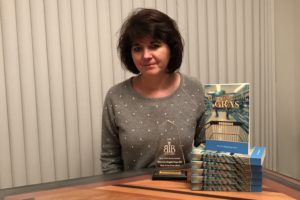Infections, a Major Setback for Improvements in Autoimmune Diseases
The connection between infections (with certain viruses, bacteria or parasites) and autoimmune diseases development is well taken into account in the medical literature. Changes introduced by the infectious process can confuse the immune system in distinguishing between the foreign antigens and self-antigens. Once the individual develops an autoimmune disease, many infections can also trigger flare-ups and treating the infection produces improvements of the autoimmune disease symptoms. Ironically, the multiple classes of conventional medications—disease modifying anti-rheumatic drugs (DMARDs)—used to treat the autoimmune disorders predispose patients to infections and the treatment is usually interrupted during every infectious episode.
I experienced this vulnerability to infections with every regimen for autoimmune disease I tried and maybe this could explain my limited improvements. It took about one year after starting the Orencia (abatacept) infusions to see that I was extremely prone to bacterial infections. They have been mostly upper respiratory, sinuses and urinary tract, but occasionally others. Because of these ongoing infections, I had to space the infusions as long as 3 months apart, until I finally had to stop them. In the meantime, I’m also dealing with SIBO (small intestine bacterial overgrowth). This is another aggravating factor, not only for my digestive system but also for my achiness, and probably another reason for not getting additional improvements in my autoimmune disease. Can SIBO—a somewhat different type of infection—also account for me not getting better? I think it does.
More puzzling though, is that over 9 months since the last Orencia treatment, I’m still “fighting” with bacteria and I’m almost constantly on antibiotics for either upper respiratory/sinuses or urinary tract infections. I’m struggling to understand why is this happening? The treating specialists don’t have an answer either, especially since the effects from Orencia are supposed to wear off in 6 weeks after the treatment. I have been responding well to antibiotics, but I’m definitely concerned about the emerging resistance (to antibiotics). Of course, I asked myself how much of a role was prednisone playing in these infections. Based on how I felt on prednisone alone, at the much higher doses needed for about one year after rituximab (that made me feel much, much worse), I don’t believe the lower dose (of prednisone) plays a significant role in my infections now.
Trying to figure out why I can’t get rid of these infections for so long after the last Orencia dose, I came across the concept of biofilm formation and found quite a few research medical articles about it. The bacteria adhere to surfaces in our body and once attached, they start secreting components that build the biofilm on the natural surfaces (teeth, sinuses, bronchi/lungs, intestinal tract) and the man-made surfaces (metal prosthesis, urinary catheters, intravenous catheters). Biofilm formation on natural surfaces is not something routinely used in medical practice, although colonization of the medical devices with bacteria is well known. This is why it’s a common practice for the medical devices to be removed and/or replaced in order to prevent or treat an infection related to them.
Biofilm is a matrix of certain substances, called polysaccharides, held together by calcium, iron and magnesium. In addition, nucleic acids and amyloid protein fibers are also found in this matrix, in which microbes are embedded. Thus, they are protected from the immune system, antibiotics, UV exposure and others. The protective matrix also allows cell-to-cell interactions that benefit the “bacterial communities.” I often imagine these biofilms as “bacterial fortresses,” and although it would make a nice subject for a dystopian fiction novel, I’m going to concentrate on the medical aspects for now. Bacteria from biofilm can spontaneously break off and form new biofilms elsewhere and they are usually resistant to antibiotics and not easily identified in cultures. It’s also a possible reason why infections seem under control while on antibiotics, but return shortly after these are stopped.
Ways to attack the biofilm on natural surfaces are being researched and some of the possible remedies are probiotics, EDTA (a substance that binds calcium, magnesium, and iron), lactoferrin—a natural component of human secretions that binds the iron needed for bacterial growth, enzymatic degradation, and others. Manuka honey (derived from the flowers of Manuka bushes that grow in New Zealand)—seems to be effective against isolated or biofilm encased bacterias without evidence of bacterial resistance so far. In sinus infections, macrolide antibiotics (clarithromycin, for instance), beside the antibacterial properties, seem to have an anti-biofilm effect; baby shampoo can disrupt the biofilm through its surfactant (detergent) properties, and it’s easier tolerated when mixed in saline; xylitol, a novel nasal spray used to improve dryness, and diluted Manuka honey nasal irrigations can also disrupt biofilm integrity.
I thought the biofilms that occur on natural surfaces might be a likely explanation for these infections I haven’t been able to get rid of, and in turn, for no additional improvement in my autoimmune disease. As I noticed a lot more joint discomfort since I had developed SIBO, after gathering this information it appeared to me that one way towards improvements in my autoimmune disease symptoms was to disrupt the intestinal biofilm. Since many of the available biofilm remedies were substances being swallowed, it was more likely that some will reach my small intestine. I used Lactoferrin for about 10 days, Biofilm Defense for 1 week and Interphase for another week, with some days of break in between them. They all had a good impact on my SIBO-related intestinal symptoms, but none of them were as effective for me as Manuka honey, which ironically was the last one I tried. My major problem with taking any of these intestinal biofilm disruptors was that my other infections became even more severe, requiring more antibiotics. Subsequently, I experienced not just lack of improvement of my autoimmune disease, but worsening of my symptoms.
This makes me presume that I had developed biofilms not just in the intestinal tract, but also upper respiratory tract, sinuses, and urinary tract, and the remedies I tried reached these locations outside the intestine. The other possibility was that disrupting the intestinal biofilm freed up many bacteria that traveled to other sites and produced more severe infections. Can this happen? Hard to believe, but some researchers showed that it happens under certain circumstances, and I will discuss more about this. I decided next to give the intestinal biofilm a rest and just use some of the topical treatments for my nose/sinuses, but the same worsening infections occurred. And of course, worsening of the autoimmune disease symptoms followed each of my attempts.
The way I understood things, disrupting the biofilm can remove the embedded bacteria and let them wander free so they can be attacked by the healthy immune system, but they can travel to nearby or distant sites producing different infections and start new biofilms if the host’s defense mechanisms cannot annihilate them—as I think it happened in my case. The worst part was that the resultant infections, presumably related to breaking down the biofilms, came with significant more achiness and certain big joints (hip, knees, elbows and shoulders), were much more impaired. On top of this, the additional discomfort from the numerous ethylene oxide derived “inactive” ingredients from the antibiotics (which I talked about at length in the book), has been adding to the inflammatory fire and accounting for the lack of additional improvement of the autoimmune disease symptoms. It’s difficult for me to appreciate which of these two factors played a bigger role in worsening my joints, and I often felt that, because of the infections and the inactive ingredients, my disease was spiraling downward.
There were days, very few and far in between, when my infections seemed calmer and I was off antibiotics; then, I felt much less pain. This is why I’m optimistic that after overcoming this infections hurdle, I will see even more improvement of my autoimmune disease symptoms. How long will this take? How slow will I have to attack and eradicate these biofilms and infections? From what I read in medical research articles, however, eradicating the biofilms seem a very hard to attain the goal with the resources available today, especially in people with depressed immunity; this is probably the reason why biofilms form to begin with. I’m hopeful now that about one year after my last infusion will be enough time to recover my infections’ fighting abilities, just as it took one year to develop. This is really just wishful thinking and the reality could be different; I will take “the wait and see” approach.
Definitely in my situation, although I think other patients may experience similar trouble, the use of medications designed to help cool off the autoimmune process triggering the joints symptoms often results in infections. These infections and the antibiotics worsen the autoimmune disease symptoms, which in turn would require additional doses of medications to relieve them, followed by other infections, thus creating a vicious cycle.
Resources:
- https://www.ncbi.nlm.nih.gov/pmc/articles/PMC2665673/
- https://academic.oup.com/cid/article/33/8/1387/347551
- http://jb.asm.org/content/198/19/2579.full


